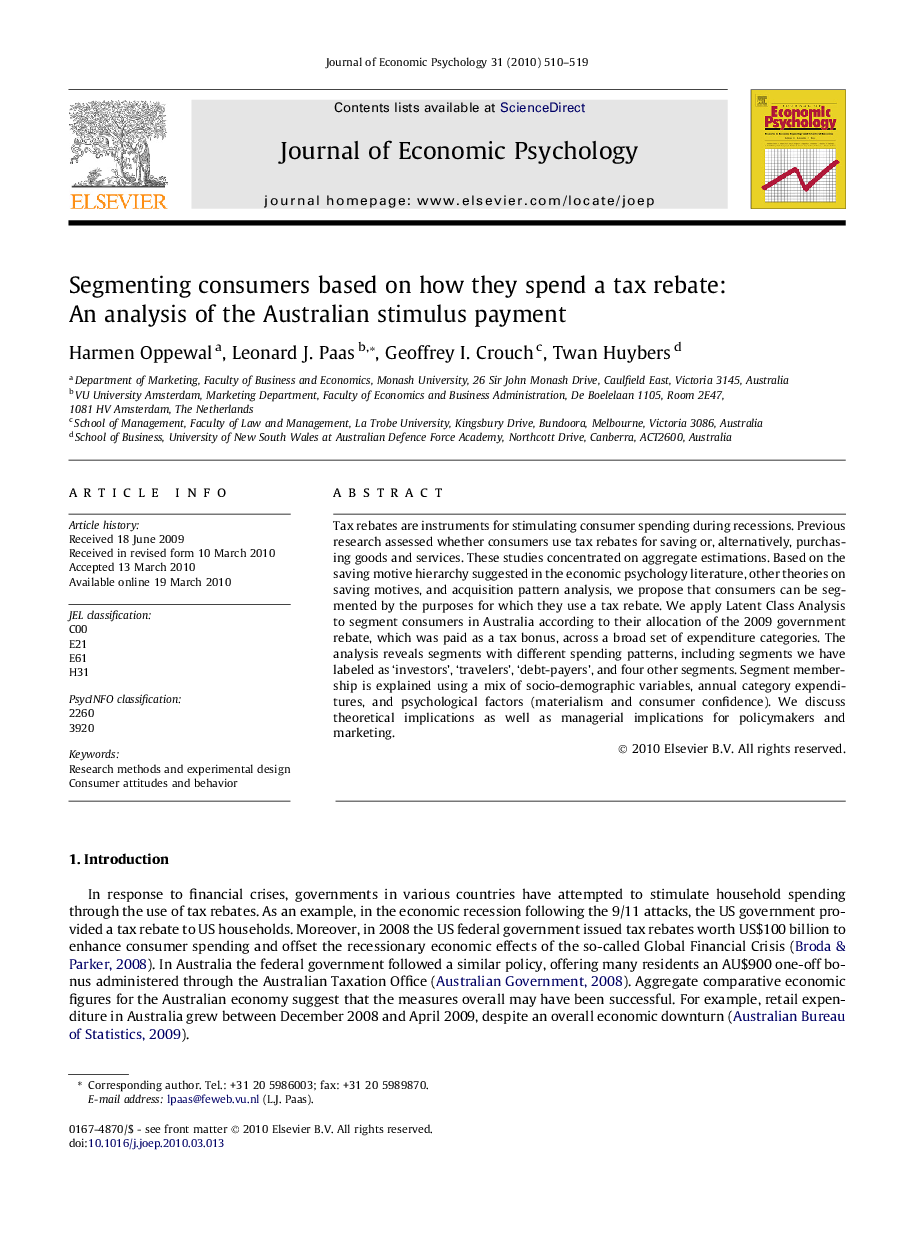| Article ID | Journal | Published Year | Pages | File Type |
|---|---|---|---|---|
| 885274 | Journal of Economic Psychology | 2010 | 10 Pages |
Tax rebates are instruments for stimulating consumer spending during recessions. Previous research assessed whether consumers use tax rebates for saving or, alternatively, purchasing goods and services. These studies concentrated on aggregate estimations. Based on the saving motive hierarchy suggested in the economic psychology literature, other theories on saving motives, and acquisition pattern analysis, we propose that consumers can be segmented by the purposes for which they use a tax rebate. We apply Latent Class Analysis to segment consumers in Australia according to their allocation of the 2009 government rebate, which was paid as a tax bonus, across a broad set of expenditure categories. The analysis reveals segments with different spending patterns, including segments we have labeled as ‘investors’, ‘travelers’, ‘debt-payers’, and four other segments. Segment membership is explained using a mix of socio-demographic variables, annual category expenditures, and psychological factors (materialism and consumer confidence). We discuss theoretical implications as well as managerial implications for policymakers and marketing.
